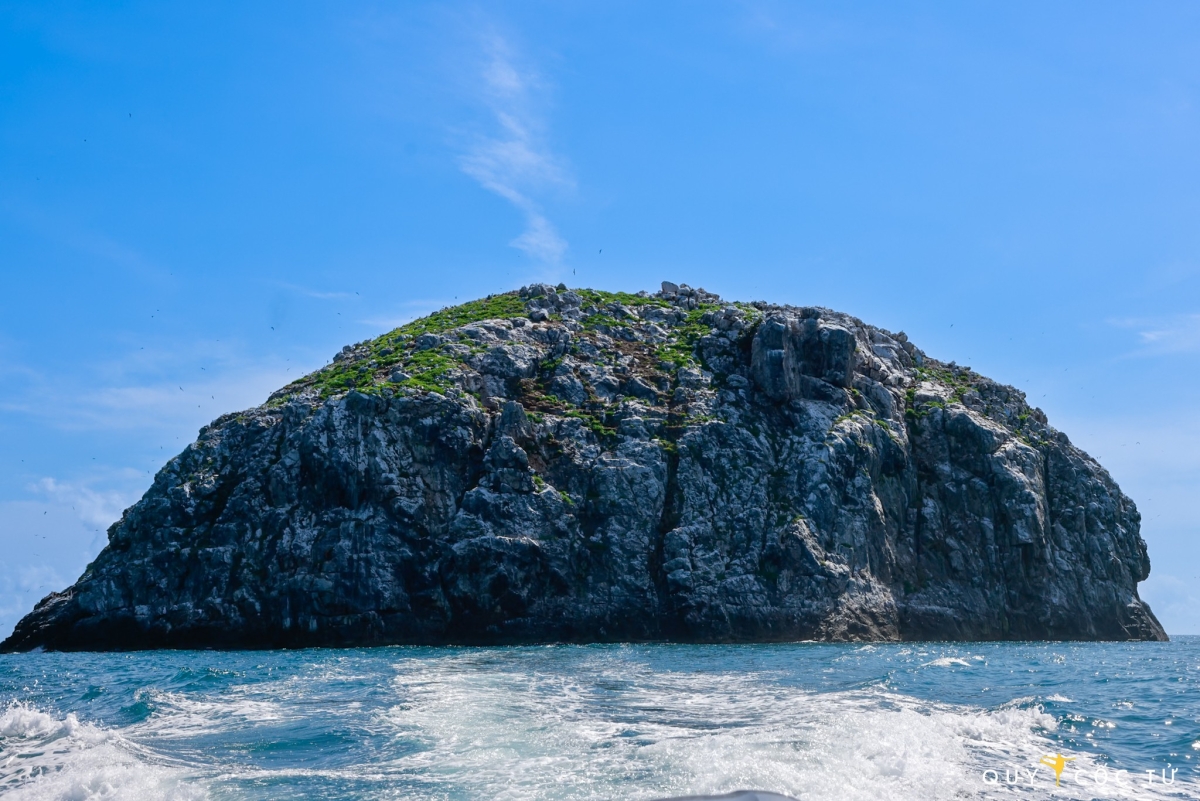
Hon Trong (Egg Island) is the most northeastern island in the Con Dao National Park archipelago, approximately 20 km from the main island. This small island, just under 2 hectares, boasts a unique landscape of grass, bushes, and oddly shaped rocks stacked on top of each other.
In late June, wildlife photographer Ngo Tran Hai An, with permission from the Con Dao National Park management, had the rare opportunity to visit this remote island.
“It was a once-in-a-lifetime chance as the island is almost entirely off-limits,” said An.
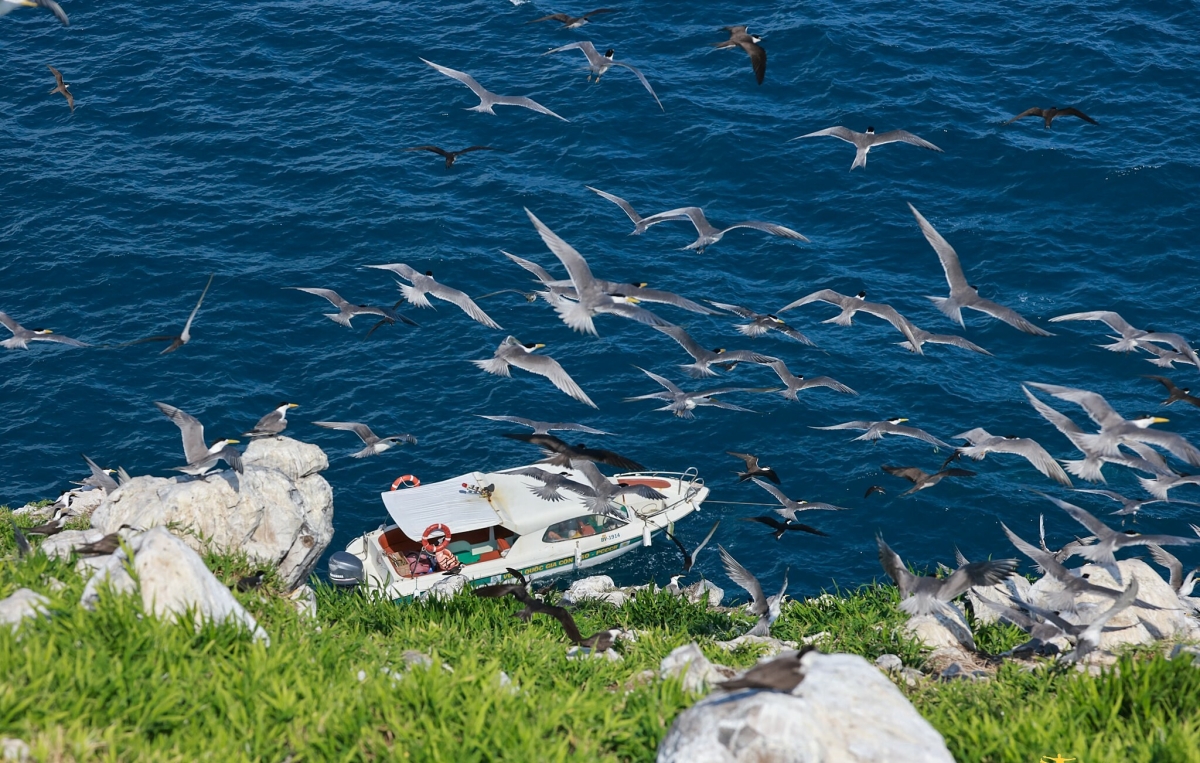
According to the photographer, Hon Trong is perched precariously in the middle of the sea, making it extremely challenging to access. Canoes have to take advantage of the waves to get close, and then one must cling to the rocks to climb onto the island.
It took An over 30 minutes to reach the island from the main island of Con Dao, and despite favorable weather conditions, it was a further 20-minute struggle against the waves and treacherous terrain to finally set foot on Hon Trong.
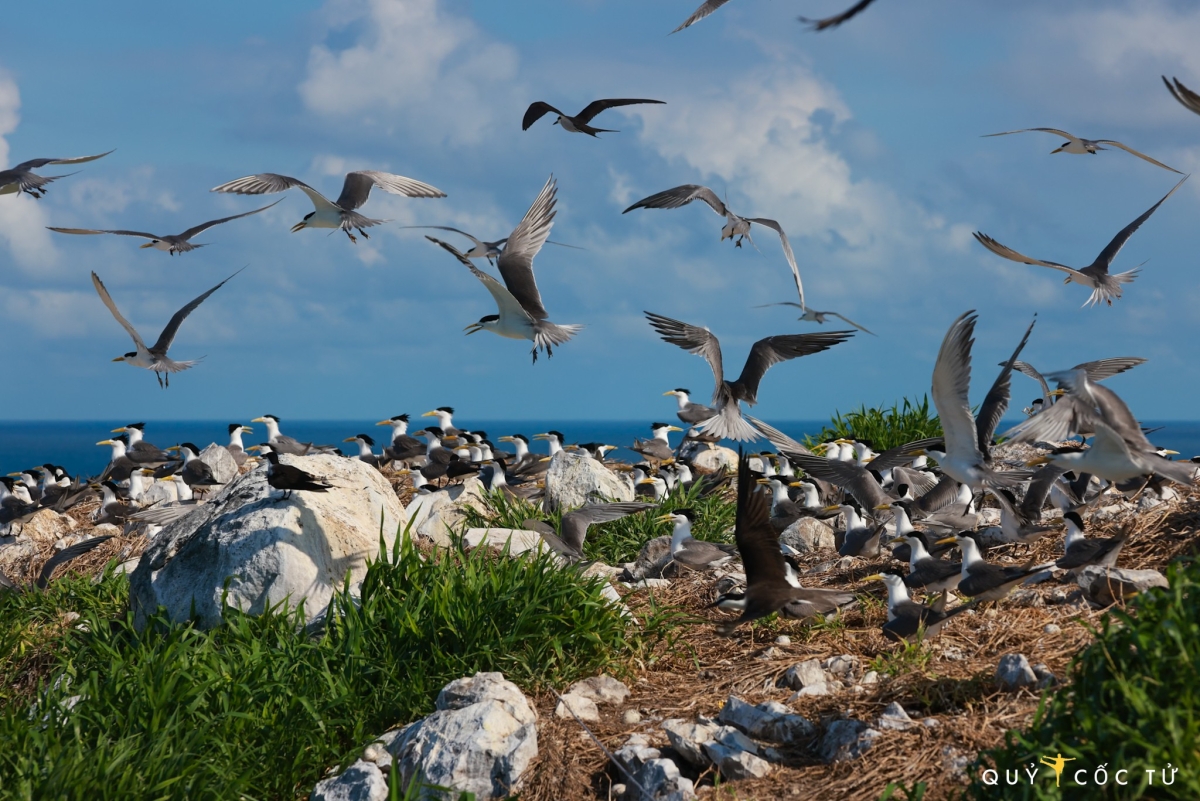
The Con Dao National Park is home to several migratory seabird species, including the black-naped tern, great crested tern, white-vented frigatebird, white-bellied sea eagle, and sooty tern. These birds nest all over the island and soar over the sea in search of food, laying eggs, and caring for their young.
At one point, Hon Trong recorded tens of thousands of seabird eggs, with an average density of 4.88 eggs per square meter. On November 28, 2024, the Vietnam Records Organization (VietKings) presented a certificate of recognition to the Con Dao National Park Management for this remarkable achievement.
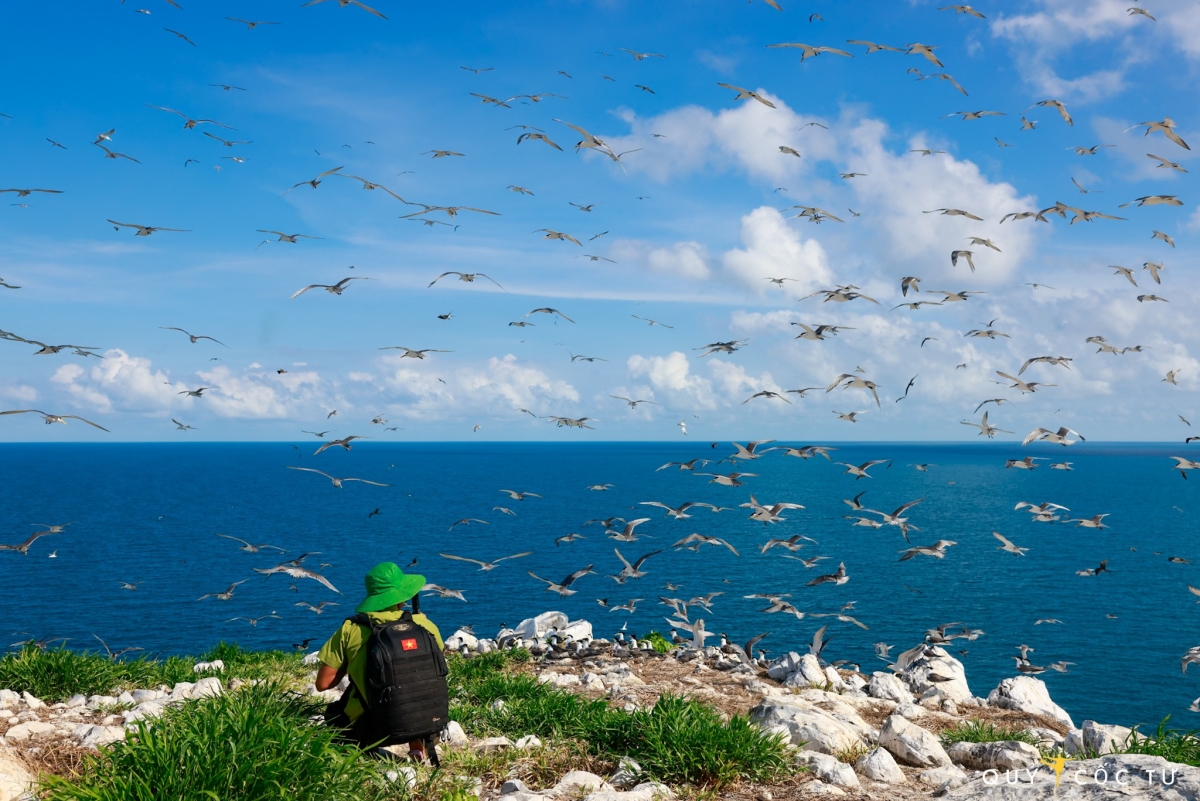
During his two-hour visit, An carefully followed the instructions of the national park staff to avoid disturbing the natural habitat of the birds. “I was truly nervous and excited because everywhere I looked, on the ground, on the rocks, and in the bushes, there were eggs and baby birds,” he said.
To combat egg theft, the national park installed surveillance cameras around the island, which has led to a recovery in the bird population and the number of eggs.
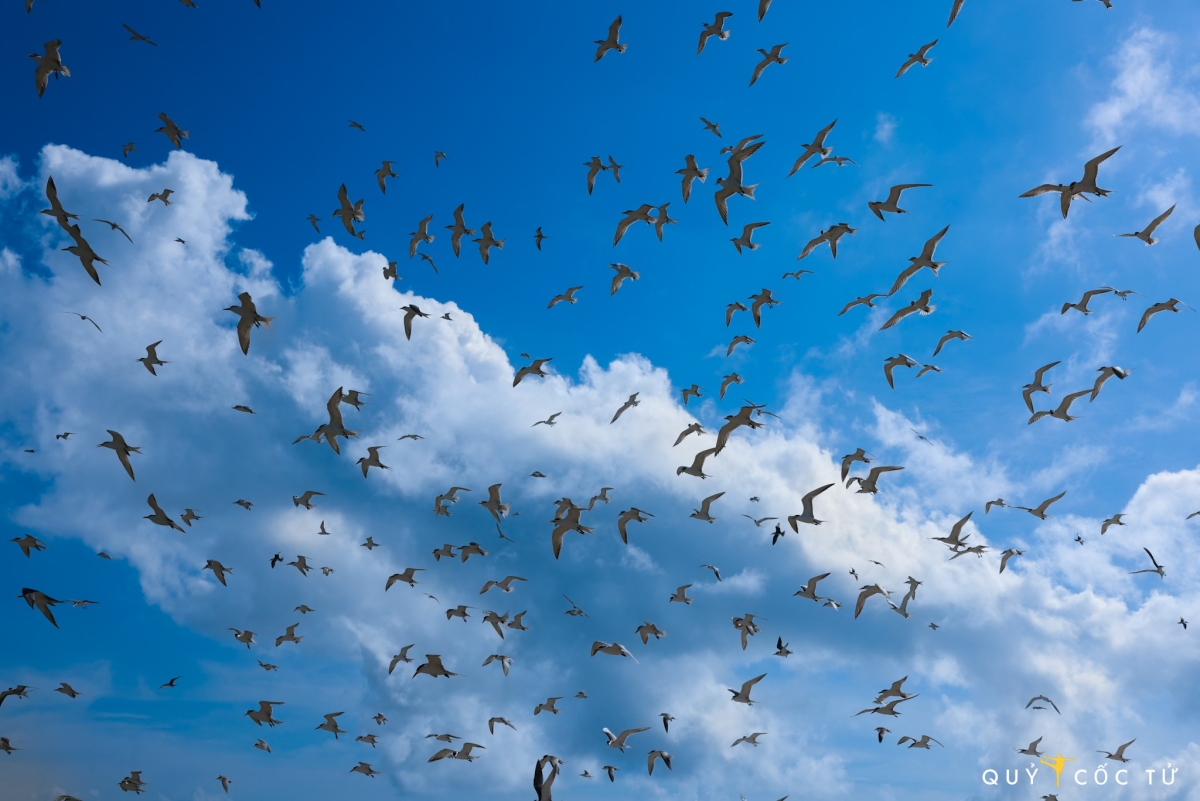
The most memorable moment for An was when he first arrived on the island and thousands of birds suddenly took flight, filling the sky. Despite having photographed birds in other national parks like Tram Chim, Nam Cat Tien, and U Minh, he had never experienced anything as breathtaking as Hon Trong.
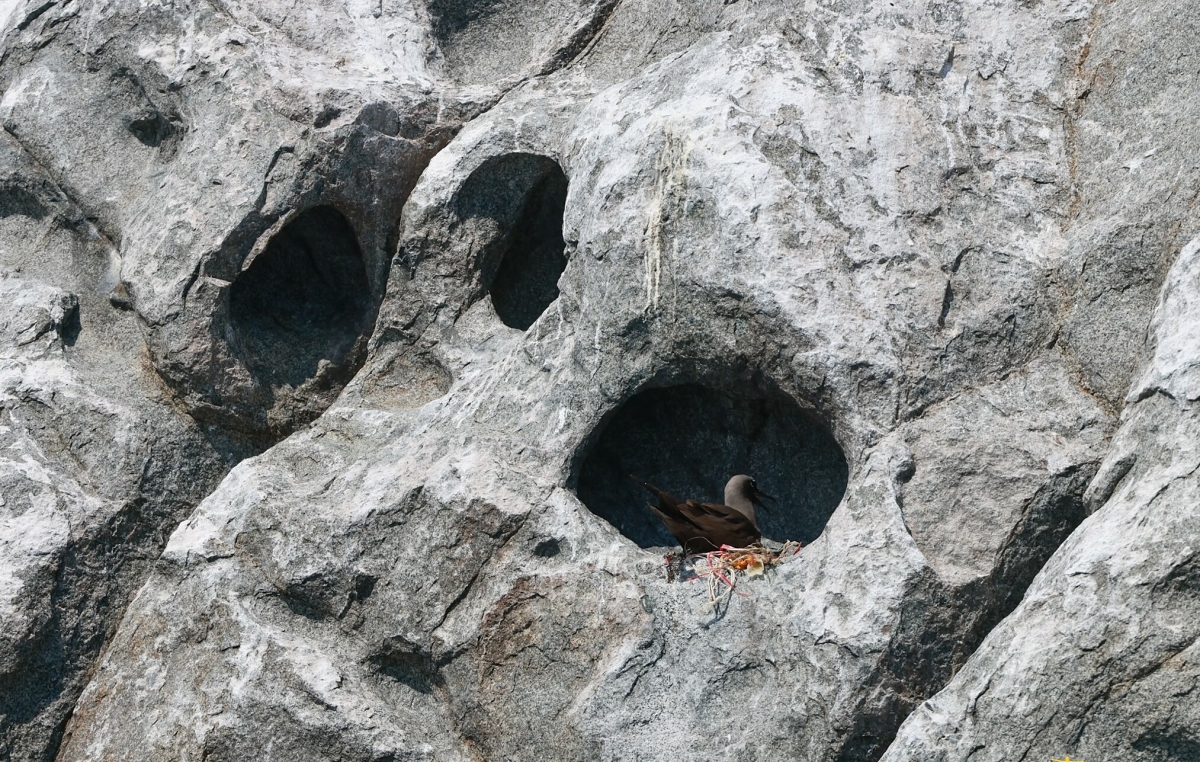
In addition to the bushes and flat areas in the center of the island, many birds choose to nest in the precarious rock crevices around Hon Trong to avoid predators.
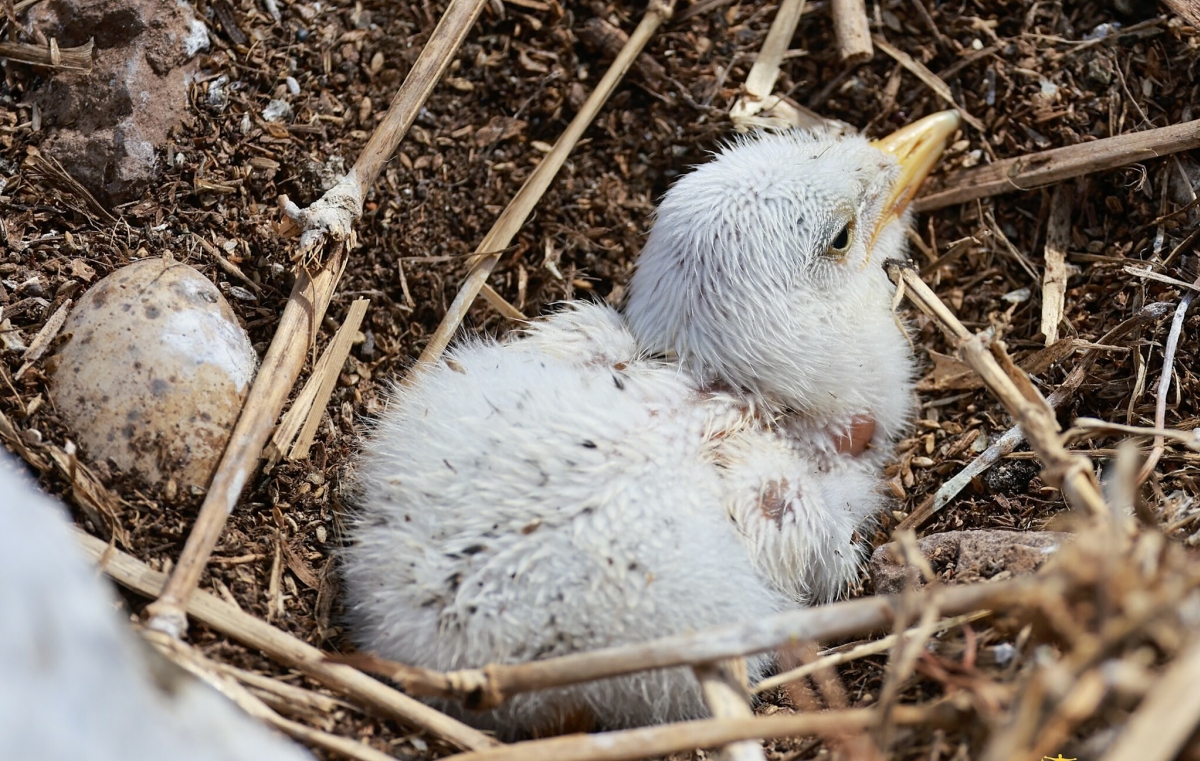
According to the Con Dao National Park management, from April to October is the season when migratory seabirds come to the island to nest and breed. In the photo is a two-day-old chick waiting for its parents to bring food to the nest.
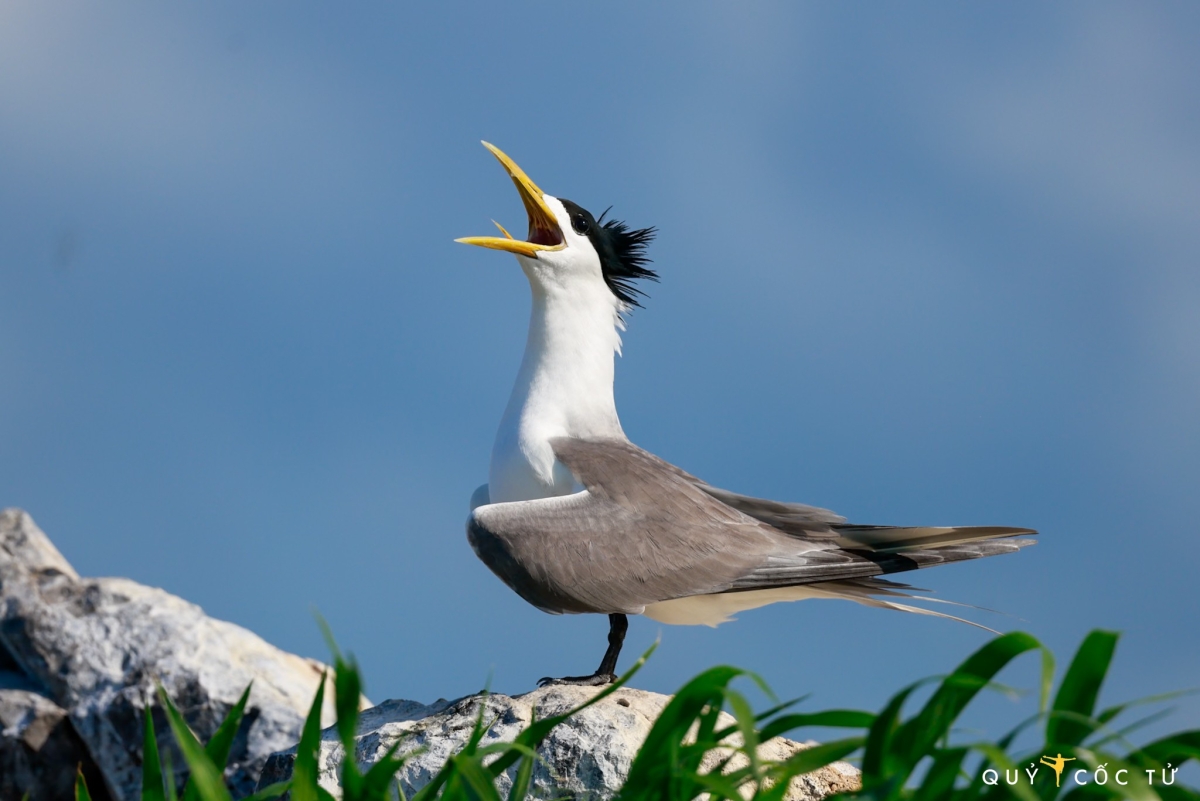
The great crested tern, as an adult during the breeding season, has a gray upper plumage and a white underside (belly). Its bill is yellow, and it sports a black crest that is flattened backward in winter. The chicks have a different appearance, with a mix of gray, brown, and white feathers, and they rely on their parents for food for a few months after fledging.
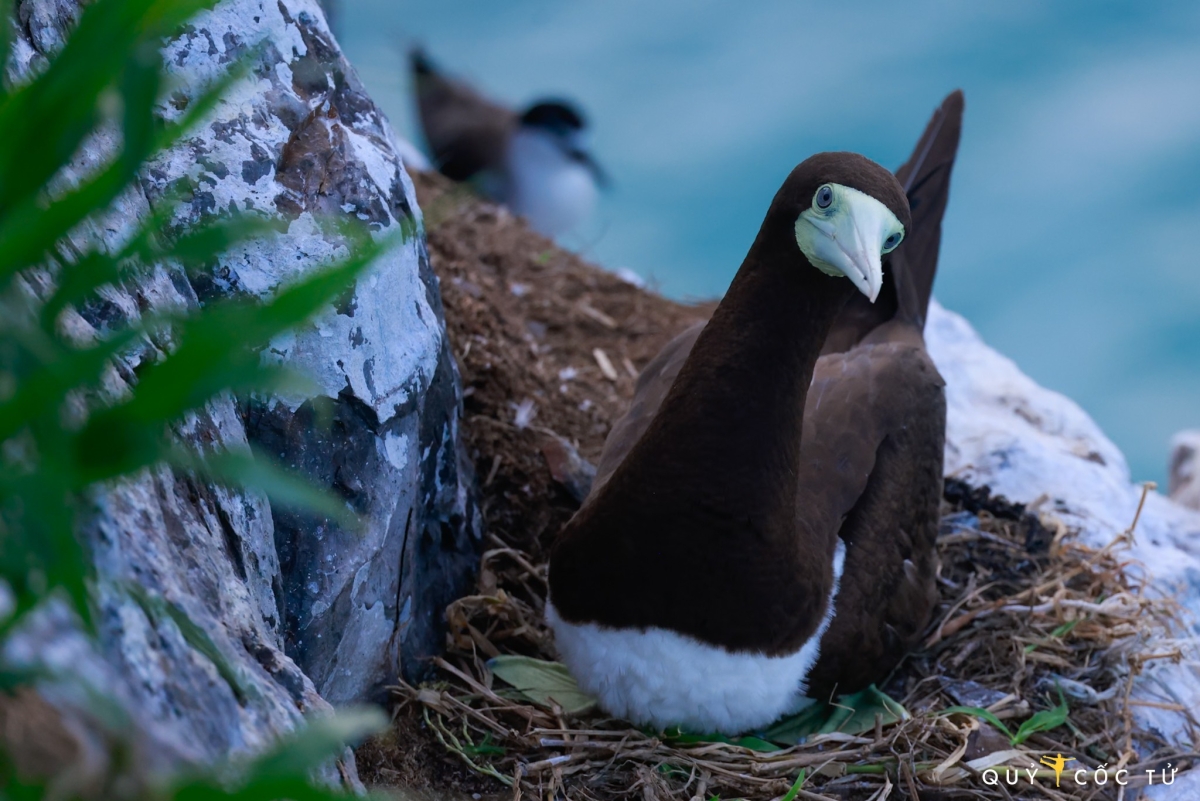
The white-vented frigatebird typically nests in precarious cliff-side locations. The white-vented frigatebird (Sula leucogaster) is the only large seabird species in the frigatebird family recorded in Vietnam and is an important symbol of the Con Dao marine ecosystem.
This relatively large bird has a length ranging from 73-83 cm. Adults have a striking appearance with a dark brown head and back contrasting sharply with a white belly. Its distinctive features include a pale yellow bill, green facial skin, and pale yellow legs.
This species is renowned for its impressive hunting abilities. They can dive at speeds of up to 120 km/h to catch small fish and squid near the water’s surface.
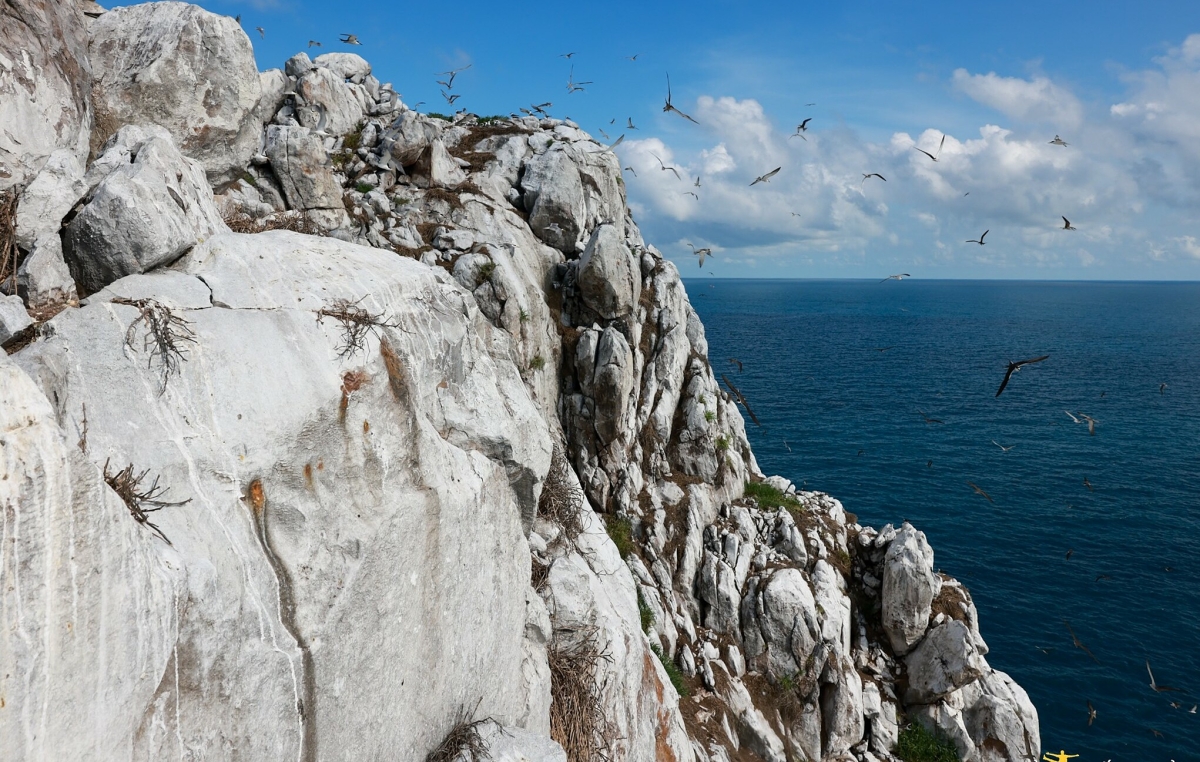
Hon Trong is considered the most important and largest seabird colony in Southeast Asia, with an exceptionally high density of birds and nests. This characteristic makes the island extremely valuable for biodiversity conservation and the protection of seabird populations in the region.
Access to the island is strictly prohibited to the public. All activities on the island must adhere to stringent regulations to protect the sensitive habitat of the seabirds.
The photographer hopes that his images will inspire the community to join hands in protecting the environment and nature. “Vietnam’s wildlife can certainly produce impressive frames that rival those of international productions,” An added.






























